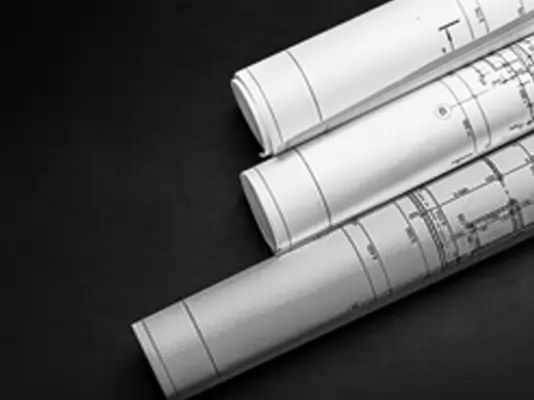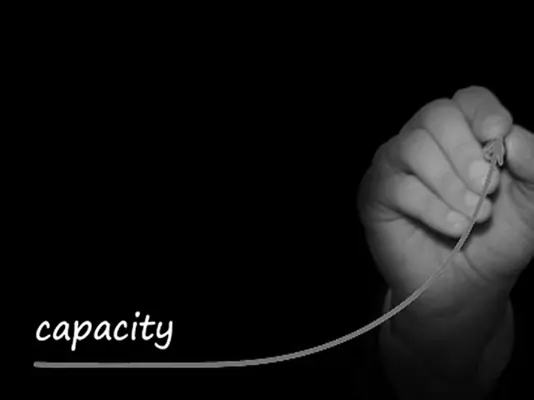Stop digging if you are already in a hole!
Satyashri Mohanty & Prabhat Choudhury

With fast growing infrastructure requirements, the rate of job creation is increasing disproportionately as compared to the availability of experienced designers. With many jobs chasing few resources, almost every company is facing the problem of retaining experienced designers. The average experience profile of designers has declined over the years, as companies are increasingly depending on fresh recruits.
On one hand, most companies are experiencing a boom in their order books, and on the other hand, the net capacity seems to be depleting. Organizations are trying to manage the situation by forcing the designers to stretch beyond the official working hours, which, in turn, is causing burnout of designers and an aggravated problem of talent retention (It is then no surprise that designers are also moving away from the core engineering industry to the lucrative engineering services industry where the business model is based on selling the available resource hours,which ensures that the load on resources is controlled and pressure is less.)
For the core engineering industry, this appears to be an unsolvable problem. Yes, the companies in this industry are in a hole, but the bigger problem is that they have not stopped digging further! The inefficiency of companies in managing this situation is worsening the chaos.
The default working rule for most companies is that design should be worked upon immediately on receipt of an order. This is primarily driven by the pressure to release specs of long lead-time procured items or the pressure from customers to release basic designs for integration with other designs or to provide inputs for civil work of the client’s project. With limited resources, this pressure only leads to an environment of poor multitasking. On receipt of a new job, the design resources immediately start working on the new job. In many cases, the design work is started even without having complete inputs in place. The time pressure forces designers to make some assumptions on missing inputs (rather than wait for them) and release the initial designs.
It is not surprising that the drawings released are subsequently revised multiple times. While the initial basic designs get into iterations, the interruptions on detailed designing causes further delays. The design iterations and interruptions lead to subsequent procurement delays and loss of manufacturing capacity. The problem is more acute in organizations where design involves complex two-way dependencies between different design departments (eg, the output of systems designs provides inputs to calculate the load data in electrical design, but, at the same time, the constraints of location of wiring cutouts can be an input to the systems design. Furthermore, the wirings and corresponding size of cutouts can be finalized only after the load is known, which requires completion of systems design). In such environments, the pressure of time on each department to release their designs along with an environment of conflicting priorities can lead each department to assume some variables on behalf of other department, when the information is not immediately available. As a result, conflicts could occur in the design criteria assumed by various departments, leading to a cascading loop of many iterations and rework. It is not surprising to see each drawing being revised five to six times in addition to the long time elapsed for design completion.
Many of the iterations also occur because of errors made during the frequent switches. Each time a designer works on a design, he builds an understanding of the relationship among all design variables, and every time he switches and returns to the task, he is forced to rebuild this understanding. Under the pressure of time, sometimes, the designer fails to re-build his entire understanding, and it is here that errors creep in. Most managers tend to believe that the real reason for design errors is lack of experience and not the poor multitasking environment. The best way to isolate multitasking as the real cause is to run a simulation where the job at hand is well known and there is only a poor multitasking environment. The best way to simulate is to take up two tasks that we definitely know. For example, writing alphabets from ‘A’ to ‘T’ can be considered as one task and writing the odd numbers between ‘1’ to ’40’ as the other task. The multitasking environment can be simulated by writing ‘A’ followed by ‘1’ and then ‘B’ followed by ‘3’, and so on. In the second round, one task after another is completed (ie, write ‘A’ to ‘T’ without interruption followed by the odd number sequence between ‘1’ to ’40’).

If one does the two rounds and maintains a note on the number of errors (and rework) in the round of multitasking versus the errors (if any), in the round of no multitasking, one can see the drastic difference. Even for a task, where the expertise of resource is well established, mistakes are committed. The mistakes are due to frequent context switching by the mind, and hence, errors creep in. So, even when resources are the experts in doing the job, frequent multitasking can cause errors.
The amount of errors is also directly proportional to the level of difficulty of job (and hence, the switching complexity). We can prove this by simulating the two rounds with two tasks having complex numeric series. With a new resource, we can assume the level of switching complexity to be higher, and hence, the errors are much higher when new resources work in an environment of multitasking than in a non- chaotic environment.
The source of errors is not limited to only design resources directly doing the job. It also aggravates due to weak supervision of jobs. In an environment of frequent priority changes, the management bandwidth of the design department (those with maximum experience) is used up in either explaining the delays or following up with other departments. At times, due to overload, they directly work on a specific design task. Their expertise is not available for important tasks of guidance and checking of many designs in progress in the department. The errors made by less experienced designers go unnoticed, till late in the project, while the organization repeats the errors over and over again.
As analyzed here, in an environment of frequent priority changes, the waste of design capacities manifests in following ways:
- Additional set up and set down each time a designer switches jobs
- Iterations due to erroneous design assumptions made due to delays in information receipt
- Rework due to mistakes made by designers during frequent switching (despite having complete information)
If each design goes through five to six iterations (with non-negligible lead-time and capacity usage for each iteration) the capacity wastages are of mammoth proportions. However, managers have almost accepted multiple design iterations as a fact of life. Hence, the only way available is to blame the increasing order book or the scarcity of designers in the job market. Unfortunately, this way of blaming is not of much help.
How about a different approach? Can we not drastically reduce the wastages and release the hidden capacity without the need for hiring more? Why not exploit the capacity of expert resources that are already in the organization?
To answer these questions, we need to understand the causality behind capacity wastages. The core problem is the starting assumption – every design must be worked upon immediately upon receipt of order. This way of working, with limited resources, results in an environment of frequent priority changes, subsequent capacity losses,and delays in design. This way of working uses an assumption: the earlier one starts a work, earlier the work will finish. However, this assumption is not valid for an environment of multiple projects where limited resources are shared across many projects. There is not only loss of time but also capacity. What is the way out? An example of road traffic can explain this situation. We can adopt the solution that a traffic police tries to implement when faced with a road jam. He solves the problem by regulating the flow of vehicles – they form a queue. Suddenly, we see many more vehicles coming out, faster than under conditions of a road jam, with the same limited resource (width of the road). We can apply this common sense solution to a design department where there is a traffic jam of designs, while resources are limited. We have to limit the number of open designs at any point of time and form a queue. In the environments of poor multitasking (observed by frequent priority changes), the number of open work fronts can be reduced by more than half without the fear of starvation. The excess work in progress (WIP), as well as new designs can wait for their turn to get inside once a WIP level comes down. Here, a new rule comes into being – One out and then One in. The closure criteria must be clearly defined, otherwise the situation may deteriorate to a poor multitasking environment within no time.
The reduction in WIP releases capacity of the key designers in the team. They can now check the missing information of all designs waiting outside in a queue for their turn. Their job is to ensure that the full information kit is available before start of the work. For complex designs (with dependencies with various functional design teams), the design interfaces and the criteria can be agreed upon with other design teams before the start of the job. The upfront agreement on design criteria and interfaces sets the limits of cost optimization (or the rules of subordination) of various design functions. This helps in further control of iterations. (For example, the civil and structural design limitations can be specified upfront during initial systems design. The focus on clearly defining the interface limits, as part of full kit, before start of the designs ensures that rework is contained).
The steps taken to control poor multitasking and full kit has the potential to release nearly 50% additional capacity or, in other words, nearly 100% extra output, particularly in an environment of complex designs.
With implementation of these two steps, the lead time for design of Engineering, Procurement and Construction (EPC) Company, managing large material handling systems projects, declined from more than a year to less than four months. The number of design iterations dropped by 80%. The outsourcing of design was nearly eliminated. At the same time, with the reduced level of chaos, the designers experienced an environment where burnout was less, as they did not have to stretch beyond office hours. The design attrition rate has also come down.
The company not only stopped digging the hole but managed to come out of it.







